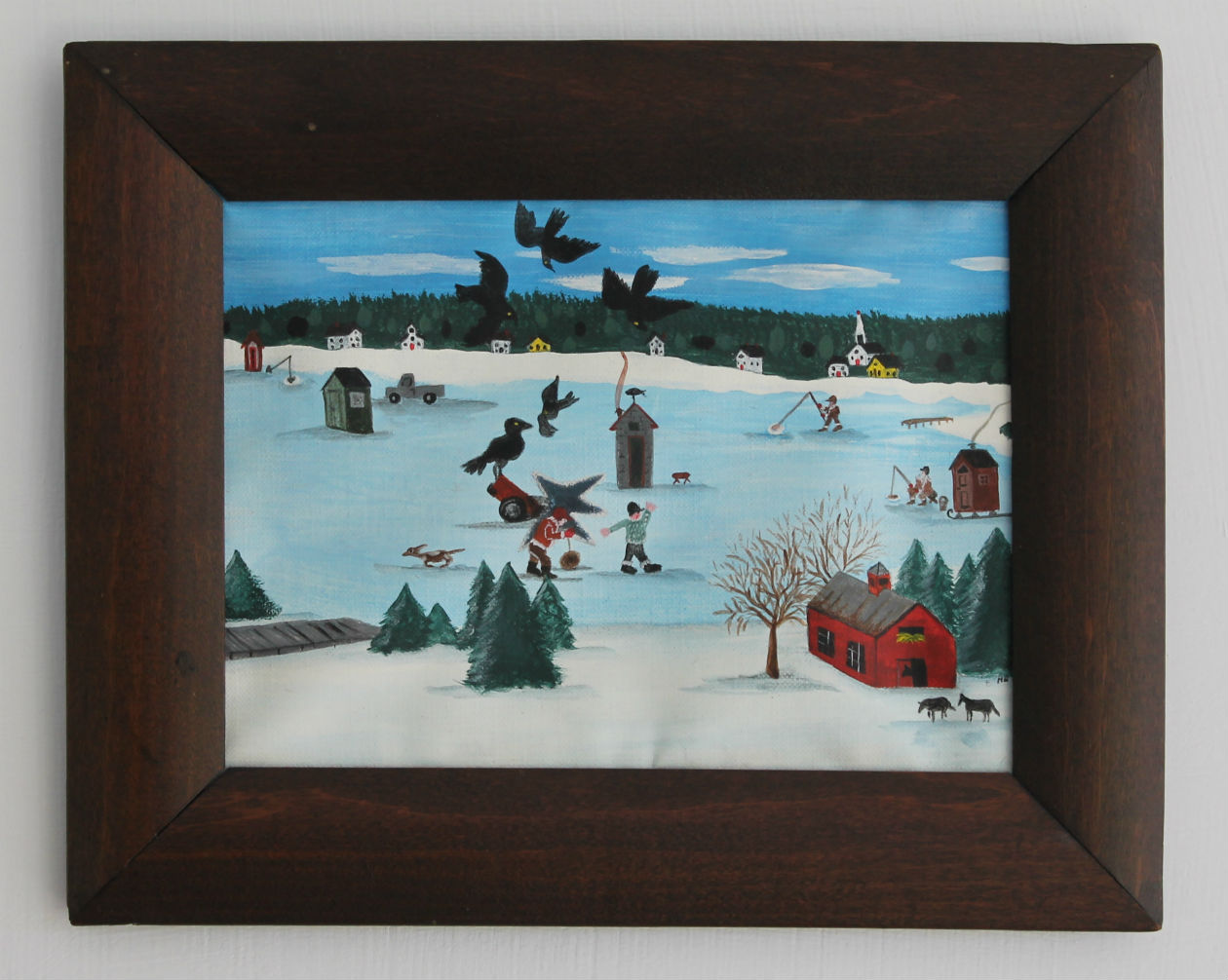Dr. Eleanor McQuillen’s Crime Scene Painting Cold Dread, Frozen Dead
The blackbirds are back and thank goodness, otherwise I might not be able to identify the victim in this crime scene. The blackbird sitting on the back of a partially submerged vehicle on the edge of a hole in the ice suggests an ice fisherman has met his demise.
I am intrigued by the way my mother plays with scale and perspective in this crime-scene painting. As an artist, she is typically very literal and straightforward. Objects in the foreground are usually shown as bigger than objects in the background, but not in this case. The red barn, horses, and trees in the foreground are miniaturized. As you get closer to the scene of the accident the scale of everything increases, until you reach the biggest figure in the painting, the ominous blackbird. It makes me think of the scene in Jaws, when the camera suddenly zooms in on the sheriff’s face as he sees the shark attack, capturing his rush of panic.
While she plays with the perspective, she remains very true to other details such as the blue of the sky, the flat, wintery clouds, and the activity on the frozen lake.
Next week’s crime scene painting is a witness to evil with Lost to the Darkness of a Dark Heart.
Adopt a detective’s perspective when looking at this painting and use three simple questions to frame a class discussion.
- What is going on in this picture?
- What do you see that makes you say that?
- What more can we find?
Decide if and when to share the title of the painting as it may guide, or overly influence, the way students view the work. You will also need to decide if it is beneficial to share the back story that this is a crime scene painting and is painted by one of the crime scene investigators for her child as a way to share life’s thoughts and lessons.
This painting offers an opportunity to explain a common idiom that may challenge English language learners—“skate on thin ice.”


At first I found it disturbing how the people on the lake seemed completely unfazed by the tragedy a few yards away. But then I thought maybe the artist had collapsed the dimension of time to a single frame, sort of similar to how she flattened the dimension of distance.